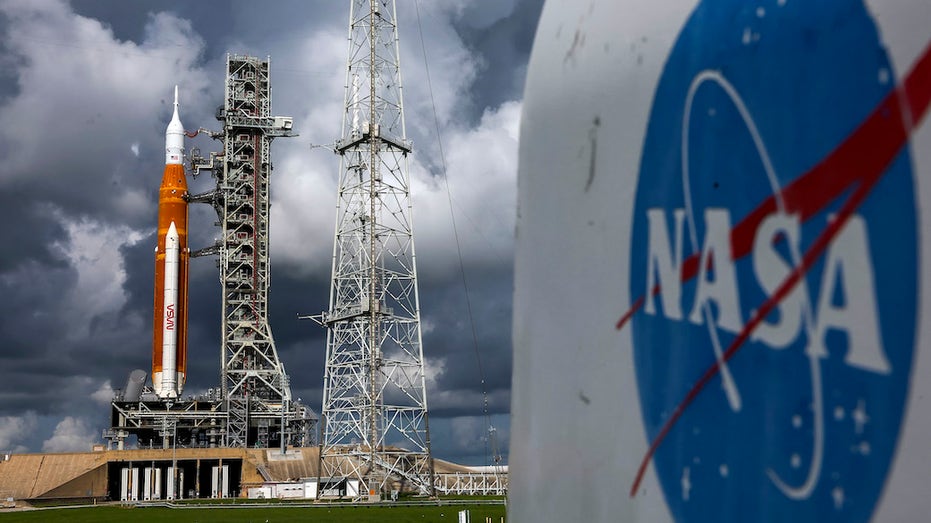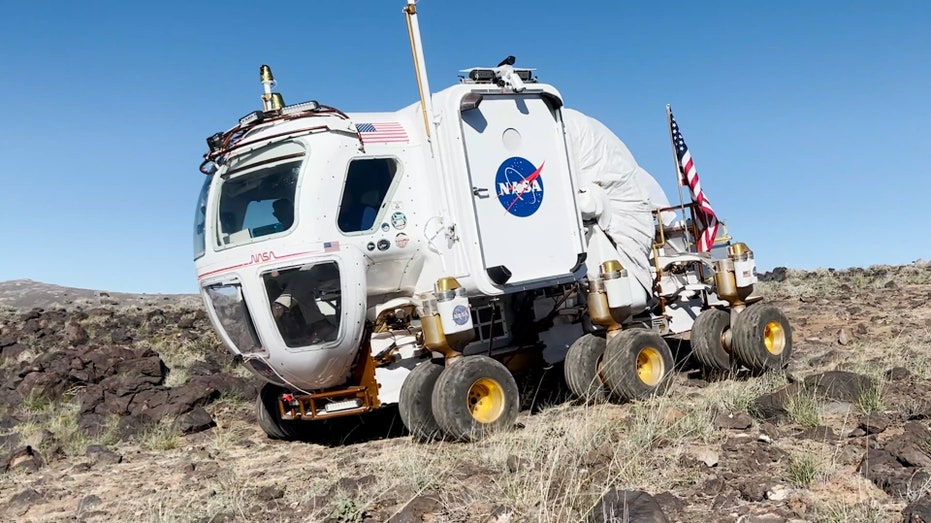NASA Artemis moon rocket launch countdown begins
The NASA Artemis I rocket scheduled to lift off Wednesday morning sustained damage during Hurricane Nicole as it made landfall on Thursday.
NASA briefs the press after historic Artemis launch was scrubbed due to fuel leak
NASA briefs the press after historic Artemis launch was scrubbed due to fuel leak.
The countdown for NASA’s Artemis I launch is underway for an anticipated liftoff from Florida's space coast on Wednesday, though damage sustained during Hurricane Nicole could delay the rocket’s voyage a little longer.
As Hurricane Nicole made landfall in Florida last Thursday, the high winds caused a 10-foot section of caulking to peel away near the crew capsule on top of the rocket, the Associated Press reported.

CAPE CANAVERAL, FLORIDA - SEPTEMBER 02: NASA's Artemis I rocket sits on launch pad 39-B at Kennedy Space Center on September 02, 2022, in Cape Canaveral, Florida. The Artemis I first attempt to was scrubbed after an issue was found on one of the rock ((Photo by Kevin Dietsch/Getty Images) / Getty Images)
This is the first test flight for the 322-foot rocket, scheduled to launch from Kennedy Space Center in Cape Canaveral, Florida at 1:04 a.m. on Wednesday – the crew capsule will not be manned by astronauts this go-around, but test dummies will occupy the space.
NASA REVEALS ARTEMIS I'S NEXT LAUNCH ATTEMPT
Mission managers fear the peeled caulking, though narrow, could damage the rocket if it breaks off. They are expected to make a final decision on whether to move forward with the launch sometime Monday evening, according to the AP.
"Artemis I will be the first in a series of increasingly complex missions to build a long-term human presence at the moon for decades to come," NASA said on its website. "The primary goals for Artemis I are to demonstrate Orion’s systems in a spaceflight environment and ensure a safe re-entry, descent, splashdown, and recovery prior to the first flight with crew on Artemis II."

The NASA moon rocket stands ready less than 24 hours before it is scheduled to launch on Pad 39B for the Artemis 1 mission to orbit the moon at the Kennedy Space Center, Sunday, Aug. 28, 2022, in Cape Canaveral, Fla. (AP Photo/John Raoux) (AP Newsroom)
Over the course of 25 days, 11 hours, and 36 minutes, the spacecraft will travel 1.3 million miles, and when it re-enters the earth’s atmosphere, it is expected to be traveling at 24,500 mph, or Mach 32, before splashing down on Dec. 11.
NASA SCIENTISTS WORKING ON GROUND MISSIONS IN PREPARATION TO PUT AMERICAN BOOTS BACK ON THE MOON
While in space, the spacecraft will orbit the earth, deploy solar arrays and the Interim Cryogenic Propulsion Stage, or ICPS, to get enough propulsion to leave the planet’s orbit and travel to the moon, NASA said on its site.
Getting to the moon will take several days, but once there it will fly 62 miles above the surface of the moon and use the gravitational force to propel the Orion spacecraft about 40,000 miles from the moon for orbit.

NASA’s Space Launch System (SLS) rocket with the Orion spacecraft aboard is seen atop the mobile launcher at Launch Pad 39B as teams configure systems for rolling back to the Vehicle Assembly Building, Monday, Sept. 26, 2022, at NASA’s Kennedy Space (Credit: (NASA/Joel Kowsky) / Fox News)
It will then orbit the moon for six days before heading back to earth. Once the spacecraft returns, it is expected to land off the coast of Baja, California.
The AP reported that the monthlong $4 billion mission has been grounded since August, due to fuel leaks and Hurricane Ian.
GET FOX BUSINESS ON THE GO BY CLICKING HERE
NASA moved the rocket into its hangar during Hurricane Ian, but it remained on the launch pad for Hurricane Nicole.
The last time NASA sent astronauts to the moon was during the Apollo program's last mission in December 1972.

NASA is using this prototype pressurized moon rover to learn more about the current technology limitations to help build a newer version for future Artemis missions. (FOX / Fox News)





















